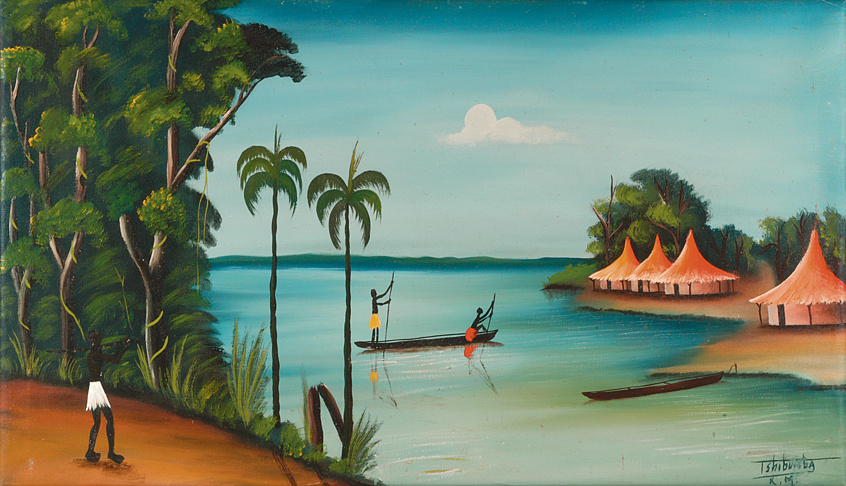TERRAISTS. Gordon Hookey—who was born in Cloncurry, Australia in 1961, belongs to the Waanyi people, and lives in Brisbane—paints words on images. YOU CAN’T HAVE OUR SPIRITUALITY WITHOUT OUR POLITICAL REALITY. Together they enact the reality of Aboriginal peoples in a sociopolitical system that can be traced back to the oppressive and exploitative operations of colonization. He bends and shapes English words, changing their meaning, appropriating a language that is not his own yet the only language he speaks. SORRY! / FUCK SORRY! / SORRY CAN GO GIT’T FUCKED! / GIVE’S THE REALLY, LUBBLY, DEADLY, BIG, SOLID, GOLDEN SORRY / POOR FELLA U.
History comes to us in words—spoken, written, repeated. It can be a scar on our body or a glow of hope in our minds. Hookey paints history as it is being made—in color, form, and stories. His interest in history painting came to fruition through a commission by research platform Frontier Imaginaries, which introduced Hookey to Congolese painter Tshibumba Kanda Matulu (also featured in documenta 14). In the mid-1970s, Tshibumba created a series of 101 paintings that represented the history of his nation, deeply torn by the trauma of colonization and shaped by the forces of militarization and economic neo-imperialism. On encountering Matulu’s work, Hookey considered what a painted history of his homeland, Queensland, would comprise, which resulted in an extensive series of paintings.
The creation history of what is referred to today as Queensland is at the core of the project presented at documenta 14 that spans a series of monumental paintings in Kassel and a public mural in Athens. Hookey juxtaposes the oral traditions transferred across generations of Aboriginal communities with the colonial genesis of Australia—the “exploration” of land, settlement, and erasure of Indigenous cultures, and the implementation of a national narrative to make History with a capital H.
The complexity of Hookey’s project opens up in the reading of these images. The transformation of written, spoken, and lived words into an image that collects the conflicting narratives of national and cultural identity, ultimately collapses history into itself. The multifaceted image that Tshibumba created with his 101 depictions is now captured in the singular image of history. In the same move, the work transposes multinarrative space to linear space, turns fracture into coherence, subversion into validation, and orality into the static record of time. Hookey’s images resonate as strongly as his words, and speak volumes.
—Hendrik Folkerts
